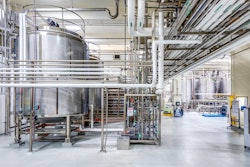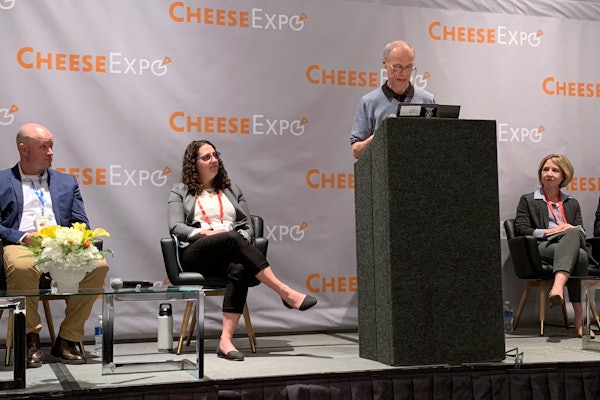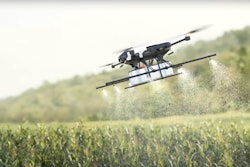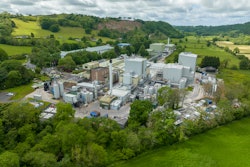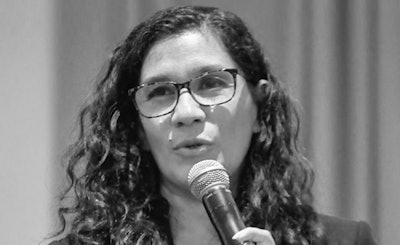
The announcement Dr. Nydia Suppen gave us at the beginning of this webinar was about the discussions currently taking place amongst a group of experts —representing standardization organizations from different countries—to establish four new norms to promote and accelerate the standardization of the circular economy, a task spearheaded by the International Organization for Standardization (ISO).
Currently, Dr. Suppen is the Vice President of the Life Cycle Analysis Committee at ISO and serves as its liaison with the Circular Economy Committee. Therefore, this webinar could not have been timelier. Dr. Suppen highlighted that ISO standardization is a work in progress and that a consensus of concepts is still being defined around what a circular economy means.
In the webinar, Dr. Suppen expanded on the mainframe in which circularity can be measured, which will be the groundwork for future agreements between governments, companies, and society in general. The new ISO standards imply the development of indicators that will measure circularity of manufacturing processes, with the goal of reducing their environmental footprints.
There are four current ISO standards under development for the circular economy:
- ISO Standard 59004: Sets the principles, terminology, and management schemes.
- ISO Standard 59010: Serves as a guide for its implementation and sectorial applications.
- ISO Standard 59020: Defines performance indicators that will allow to gauge the circularity of processes;
- ISO Standard 59031: Determines specific aspects of the circular economy.
Doctor Suppen clarified that the first two norms are closer to being completed, as there is a higher degree of consensus around them. “We are looking at completing all criteria in 2021. Developing norms takes time, but by the end of next year we will have certainty about all the aspects we need to consider in terms of measuring circularity”, said the speaker.
As part of the ISO process, paradigms are being re-evaluated. Particularly, the predominant focus on recycling of the circular economy model. “Recycling is just one of the elements of the circular economy, of the utmost importance, but not the only one”, stated Suppen while underlining that multidisciplinary international expert teams at ISO are seeking to reinforce the need to build models in which waste materials become scarce or nonexistent.
In the framework of recycling as an element of the circular economy, there is a component still not fully integrated but necessary for any successful initiative: the participation of the products’ users and consumers. “We still have a long way to go in terms of education and in finding ways to provide collection means, as well as warranting the success of the efforts being made in many of the different recycling methods that exist,” said Dr. Suppen.
 “We are looking at completing all criteria in 2021. Developing standards takes time, but by the end of next year we will have certainty about all the aspects we need to consider in terms of measuring circularity”, said Dr. Suppen.
“We are looking at completing all criteria in 2021. Developing standards takes time, but by the end of next year we will have certainty about all the aspects we need to consider in terms of measuring circularity”, said Dr. Suppen.
Beyond the Rs Concept
In the overall conception of responsible production, consumption, and disposal methods, several actions that help to enhance the value and use of products and materials have been identified: recycling, reducing, replacing, recovering, reusing, redesigning, and renovating are actions taken to create sustainable schemes that pave the way towards more rational models.
“Within the circular economy, as it is being defined at the moment, our goal is zero waste, which implies a challenge for everybody: designers, all members of the value chain, consumers through education, and, of course, governments that must take part in creating the necessary infrastructure”, emphasized Dr. Suppen while challenging attendees to transform paradigms and to learn about new aspects of the circular economy. She encouraged the audience to join the standardization efforts by contributing to their national normalization institutions, acquiring knowledge of the new standards once they are ready and published, and overseeing their enforcement.
In the discussions taking place within ISO committees to define standards, the circular economy is regarded as an economic system that allows for a circular flow of resources, encompassing their generation, conservation, and value addition, keeping in mind the goal of sustainable development. The norms being agreed upon encapsulate a highly relevant concept, which is to focus beyond the measurement of environmental impact to include social and economic aspects. “Circularity is not only present in products or services, but instead sets a macro-model, with the additional component of a product’s function that ties its consumption impact with production”, added the specialist, who is also a consultant and a specialist on consumption and responsible production for the United Nations.
Steps towards the Circular Economy
As part of the conversations being held to set the new ISO standards for the circular economy, an eight-point guide has been laid out, that will assist the implementation of activities towards considerable improvements with focus on areas of production, consumption, and product end of life.
On the first subject, production, the pinpointed actions are:
1. Resource Management and Circular Acquisitions: The use of renewable supplies and sustainable management sources stand out here, especially those that are certified in terms of waste, energy, and materials; even more, sustainable purchasing practices that contribute to the circular model.
2. Circular Eco-Design: This type of design implies, apart from the incorporation of low environmental footprint elements, higher functionality, and increased value. Design faces a vast field for innovation, to develop a “loop mentality”. As expressed by Dr. Suppen: “…so that what is poured into the market does not become residue.” Other element in this area is the creation of regenerative or restorative systems.
3. Industrial and Territorial Symbiosis: This idea encompasses the exchange of resources and the determination to share infrastructure and services, at a territorial or business sector level, as well as the sharing of knowledge.
4. Functional Approach: Within the spectrum of production, this action includes concepts such as the highest possible use of products, the most effective ways for them to maintain value for the longest time possible, along with an additional capacity to employ fewer resources, materials, and energy in their manufacturing.
In the second phase, focused on use, parameters identified by researchers towards the definition of ISO standards for the circular economy include:
5. The Extension of Life Cycle: To strive for more durable and resistant products is the first step in the consumption phase, including low maintenance cycles and the possibility of increasing reusability through multiple cycles, favored by easier ways to provide cleaning, inspection, and maintenance.
6. Responsible Use: Responsible consumption is giving way for “responsible use”, as well as a new mentality among consumers, which has led to second-hand or upcycled products purchasing models, and to collaborative consumption or joint-purchasing practices.
7. Reverse Logistics: This concept integrates non-desirable resource transportation and the return of unsold products to the supply chain.
Lastly, for the end of life phase, the essential aspect is known as:
8. New Life of Products and Materials: This idea tries to maximize the number of products and materials that may have a new life, while minimizing the amount of residue, and expanding to its fullest extent the number of reusability cycles. These actions are complemented with the implementation of recovery processes.
“In this sense, discussions and definitions are moving forward, under an overall conception that goes far beyond mere recycling and having the will to adopt a broader meaning of life cycle,” explained Dr. Suppen. Through the prism of these eight circular actions as taught during the webinar, Dr. Suppen presented attendees with three packaging production examples from Latin America and asked them about their perceptions regarding the presence of those actions in terms of manufacturing, use, and new life, for each case.
Three Latin American Circular Economy Success Cases
A flexible package for Auralac branded whole milk for the Colombian market manufactured by Plastilene, bottles for the Costa Rican beverage Tropical made by Fifco, and a box converted by the Mexican corrugated cardboard packages company Titan, were the examples presented by Dr. Suppen to underscore how diverse Latin American corporations are decisively advancing towards the adoption of sustainable production, consumption and disposal practices, as well as a circular model in opposition to a traditionally prevailing linear scheme.
The first case clearly showed how the package for Auralac milk already integrates several of the eight elements of circularity explained by Dr. Suppen, giving its properties exceed its mere recyclable qualities. Attendees learned about this case and were asked, through a quick survey, in which areas of production, use, and new life, does this package comply with the previously detailed concepts. According to the majority, Auralac’s packaging meets circularity requirements in all its processing phases, despite pending tasks regarding the use/consumption stage. Plastilene, the packaging converter, is currently working on a business model that could end the life cycle of plastics through a comprehensive approach that relies on the active participation of consumers and suppliers, while taking into account environmental issues, to create products that enhance their sustainable portfolio. This Colombian company has integrated areas of social responsibility and financial opportunities management for sustainable projects into its corporative DNA and is one of the main players in overseeing compliance of its industry’s regulations.
 As part of the conversations being held to set the new ISO standards for the circular economy, an eight-point guide has been laid out, that will assist the implementation of activities towards considerable improvements with focus on areas of production, consumption, and product end of life.
As part of the conversations being held to set the new ISO standards for the circular economy, an eight-point guide has been laid out, that will assist the implementation of activities towards considerable improvements with focus on areas of production, consumption, and product end of life.
Plastilene tackles the beginning of life phases through eco-design actions, explained Dr. Suppen, by tracing the footprint, developing life cycle analysis (LCA), enforcing material replacement, and using recycled contents, apart from the reuse of packages in agricultural activities or the manufacturing of pallets.
The bottle for the beverage Tropical made by Fifco Group was regarded by the webinar’s attendees as a good example of circularity properties in the use phase. “The bottling sector is doing many interesting things, not always easily relatable to the circular economy,” said Dr. Suppen about this case. Fifco holds an industrial symbiosis with the building materials company Cemex and they share a truck fleet to reduce gas emissions. This Costa Rican company was the first to achieve a 100 percent recovery of its plastic bottles in Latin America and has included an ECO Coin seal on its products to stimulate users in Costa Rica and other Latin American markets to separate and return clean used bottles in exchange for discounts and other financial benefits. This group also works in association with the Océanos foundation towards responsible waste management that protects the oceans and has also put in place policies for sustainable suppliers and clients. “All of these aspects that formerly seemed so disconnected from the circular model, need to be documented and integrated into the products we evaluate”, noted Dr. Suppen referring to the Fifco case.
In the case of the carboard box made by Titan, the Mexican packaging company, answers to the survey among attendees regarding circularity properties largely centered around the end of life phase, a perception shared by the company in its statements about adopting a circular economy model in which all of its products must have a 360-degree life cycle. Dr. Suppen noted that Titan puts weight on resource management actions related to renewability and transportation, as well as on tracking its environmental footprint.
The evaluation exercise as proposed to attendees of the EXPO PACK Mexico and Mundo PMMI webinar has helped emphasize the need to communicate, through packaging, those initiatives that brands are undertaking in their progress towards a circular economy. “The challenge now is learning how the different elements of circularity are being measured at the product level, and specifying how to communicate them”, concluded Dr. Suppen.
For detailed information on these three success stories, and to access the complete webinar presentation titled “Successful Models of Circular Economy and Packaging in Latin America”, please click here.

